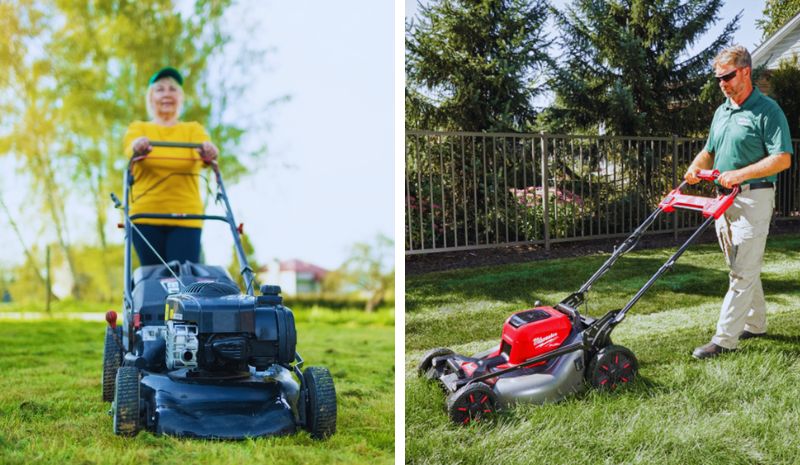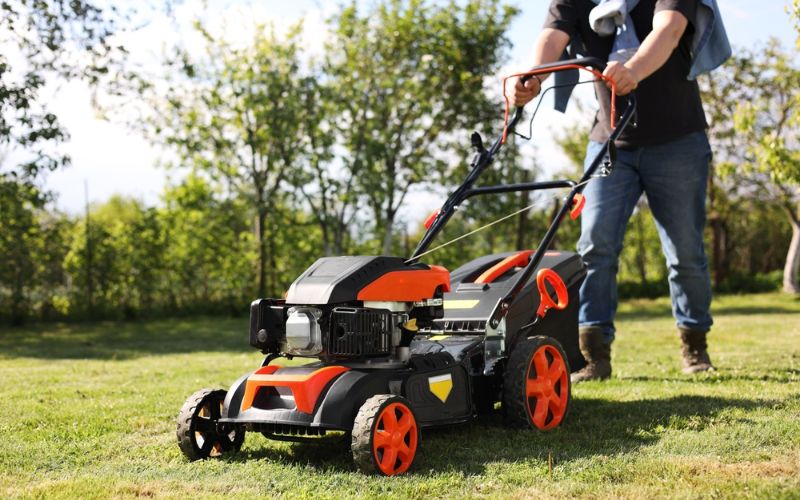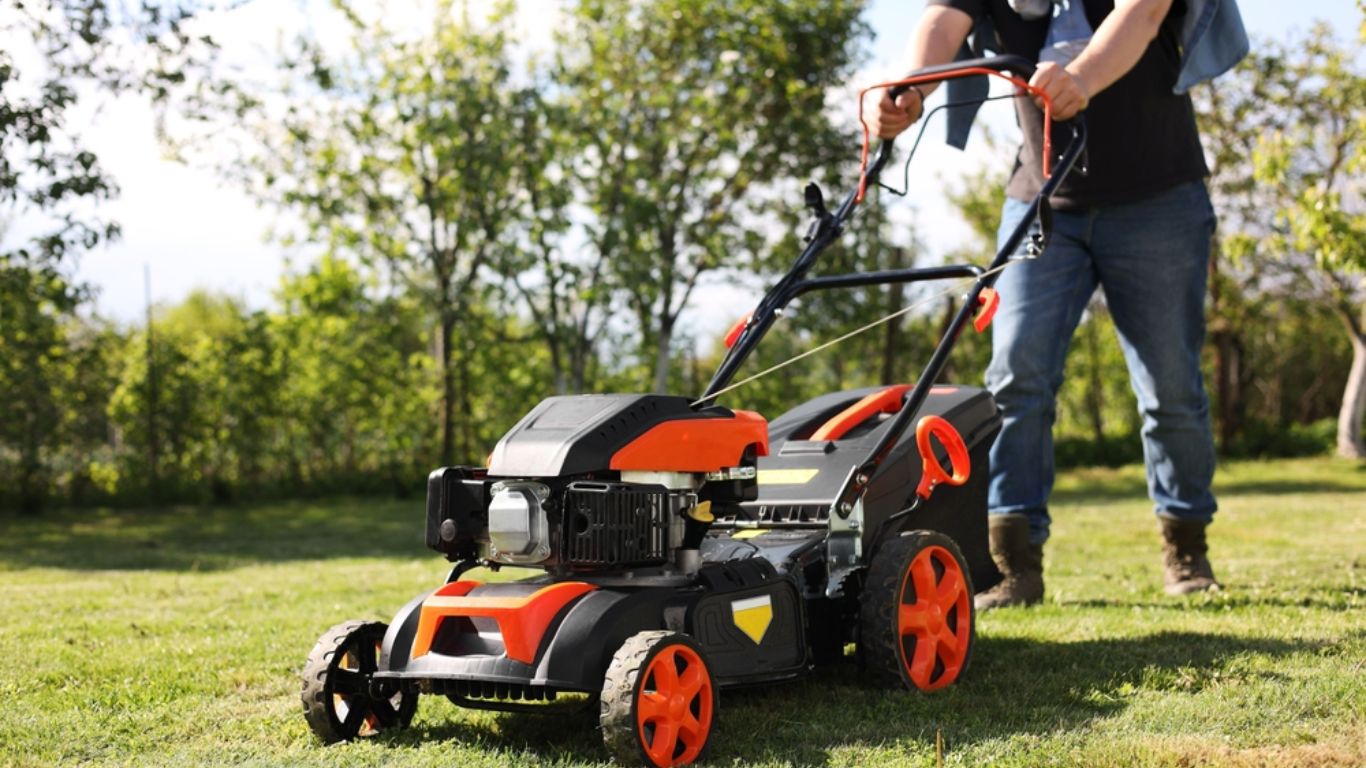Ever wondered what is the difference between self-propelled and push mower? At Best Lawn Mower For Hills, we’ve seen this question transform lawn care routines. Picture two neighbors: one glides effortlessly across their yard while the other struggles, drenched in sweat. The secret lies in their mower choice, but the distinctions go far beyond mere effort. These machines differ in surprising ways that impact everything from hill-climbing ability to precision around garden beds.
Choosing between them isn’t just about convenience—it could affect your lawn’s health, your weekend plans, and even your wallet. Intrigued? You might be shocked to learn how the right mower can turn a dreaded chore into a satisfying experience. Let’s cut through the grass and uncover why understanding this difference could be the game-changer your lawn—and your back—have been waiting for.
Understanding the Core Mechanics
When exploring what is the difference between self-propelled and push mowers, it’s crucial to grasp their fundamental operations. These distinct mechanisms shape their performance, user experience, and suitability for various terrains.
Push Mowers: The Manual Workhorses
Push mowers rely entirely on human power. You provide the force to move the mower forward, engaging your muscles with every step. This design offers simplicity and direct control but demands more physical exertion, especially on uneven or expansive lawns.

Self-Propelled Mowers: The Automated Assistants
Self-propelled models feature an engine-driven system that moves the mower forward. This innovative design significantly reduces the physical effort required, allowing you to guide the mower rather than push it. The result? A more comfortable mowing experience, particularly beneficial for larger yards or challenging landscapes.

Key Differences Between Self-Propelled and Push Mowers
When examining the difference between self-propelled and push mowers, several critical factors come into play. Let’s break them down:
Propulsion Mechanism
- Push Mowers: Rely entirely on the user’s strength to move forward. You provide all the force needed to traverse your lawn.
- Self-Propelled Mowers: Feature an engine-driven system that moves the mower forward. You guide rather than push, significantly reducing physical exertion.
Effort and Fatigue
- Push Mowers: Demand more physical effort, especially on larger lawns or uneven terrain. Users often experience fatigue more quickly.
- Self-Propelled Mowers: Minimize user fatigue. They’re particularly beneficial for those with physical limitations or when mowing extensive areas.
Speed and Efficiency
- Push Mowers: Mowing speed varies based on the user’s pace and endurance. Efficiency can decrease as the user tires.
- Self-Propelled Mowers: Maintain a consistent speed, leading to faster completion times. Their steady pace ensures uniform cutting across the entire lawn.

Terrain Handling
- Push Mowers: Best suited for flat, smaller lawns. They struggle on hills, and it can be challenging to maneuver on uneven ground.
- Self-Propelled Mowers: Excel on various terrains, including slopes and bumpy surfaces. Their motorized wheels provide better traction and stability.
Cost Considerations
- Push Mowers: Generally less expensive upfront. They have fewer components, potentially leading to lower maintenance costs.
- Self-Propelled Mowers: Higher initial investment but often offer long-term value through time savings and reduced physical strain.
Cutting Consistency
- Push Mowers: Cutting quality can vary based on user fatigue and terrain challenges. Maintaining a uniform cut requires more effort.
- Self-Propelled Mowers: Provide more consistent cutting results due to their steady pace and even weight distribution.
Self-propelled models often provide superior performance and user satisfaction, especially for challenging landscapes or larger properties.
Making the Right Choice: Self-Propelled vs. Push Mower
When deciding what the difference between self-propelled and push mowers is that matters most for you, consider how each type performs in various scenarios. While both have their merits, self-propelled mowers often come out on top.
Lawn Size and Terrain
Small, Flat Yards
- Push Mowers: Adequate for areas under 1/4 acre. Simple to maneuver in tight spaces.
- Self-Propelled Mowers: Overkill for tiny lawns but still offer effortless mowing. Win for comfort.
Large or Hilly Properties
- Push Mowers: Challenging and time-consuming on big or sloped lawns. It can lead to fatigue.
- Self-Propelled Mowers: Excel on extensive or uneven terrain. The clear winner for efficiency and ease.

User Considerations
Physical Ability
- Push Mowers: Provide a workout suitable for those seeking exercise.
- Self-Propelled Mowers: Ideal for users with limited mobility or strength. Advantage: inclusivity.
Time Management
- Push Mowers: Slower pace, suitable for those with flexible schedules.
- Self-Propelled Mowers: Significantly faster, perfect for busy lifestyles. Win for time-saving.
Maximizing Your Lawn Care Experience with Self-Propelled Mowers
Understanding the difference between self-propelled and push mowers is just the beginning. Let’s dive deep into how to leverage the full potential of your self-propelled mower for superior lawn care results.
Optimizing Mower Settings for Peak Performance
Mastering Speed Controls
- Variable Speed Ranges: Most self-propelled mowers offer speeds from 1 to 4 mph. Start slow and increase gradually.
- Terrain-Specific Adjustments: Use slower speeds for thick grass or slight inclines and faster for thin grass on flat terrain.
- Energy Efficiency: Lower speeds often consume less fuel or battery power, extending operational time.

Precision Height Adjustment
- Seasonal Variations: Set blades higher (3-4 inches) in summer to protect roots and lower (2-2.5 inches) in spring and fall.
- Rule of Thirds: Never cut more than 1/3 of grass length in a single mowing to prevent stress on the lawn.
- Micro-Adjustments: Many models offer 0.25-inch increments for fine-tuning cut height.
Advanced Techniques for Efficient Mowing
Strategic Mowing Patterns
- Alternating Directions: Change patterns weekly to promote upright growth and prevent soil compaction.
- Striping Techniques: Use roller attachments or integrated rollers for professional-looking stripes.
- Perimeter First: Mow the lawn’s edges first to create a turnaround area for subsequent passes.
Integrating Edging and Trimming
- Synchronized Workflow: Edge and trim before mowing to incorporate clippings into the main mowing session.
- Overlap Technique: Slightly overlap wheel paths to ensure complete coverage and avoid missed strips.
Comprehensive Maintenance for Longevity
Thorough Cleaning Protocols
- Deck Cleaning: Use a putty knife to remove compacted grass from the underside of the deck after each use.
- Air Filter Care: Clean foam filters with soap and water monthly; replace paper filters every 25 hours of operation.
- Spark Plug Maintenance: Check and clean spark plugs every 25 hours; replace them annually or every 100 hours.
Blade Maintenance and Replacement
- Sharpening Frequency: Sharpen blades after every 20-25 hours of mowing for optimal cutting.
- Balancing Importance: Always balance blades after sharpening to prevent vibration and uneven cuts.
- Replacement Signs: Look for chips, bends, or excessive thinning as indicators for blade replacement.

Eco-Friendly Mowing Practices
Maximizing Mulching Benefits
- Nutrient Cycling: Mulching can return up to 25% of nitrogen back to the soil, reducing fertilizer needs.
- Moisture Retention: Mulched clippings can reduce water evaporation by up to 25% in hot weather.
- Thatch Management: Contrary to belief, mulching doesn’t contribute significantly to thatch buildup when done properly.
Energy Conservation Strategies
- Optimal Mowing Times: Mow during cooler hours (early morning or late afternoon) to reduce strain on the mower and grass.
- Battery Management: For electric models, use partial discharge cycles to extend overall battery life.
- Eco-Mode Utilization: This setting can extend runtime by up to 30% on some models while maintaining cut quality.
By mastering these techniques, you’re not just mowing; you’re cultivating a healthier, more vibrant lawn ecosystem while maximizing the value of your self-propelled mower investment.
Your Hillside Lawn Care Experts: Best Lawn Mower For Hills
At Best Lawn Mower For Hills, we’re your trusted source for all things lawn mowing, especially when it comes to challenging terrains. Our expert team rigorously tests and reviews a wide range of mowers, providing in-depth analyses, comparisons, and buying guides. Whether you’re puzzling over the difference between self-propelled and push mowers or seeking the perfect machine for your sloped yard, we’ve got you covered. With years of hands-on experience and a commitment to unbiased advice, we’re here to transform your lawn care routine. Visit our website, BestLawnMowerForHills.org, to access a wealth of resources and find the ideal mower that will make your hillside lawn the envy of the neighborhood.
Conclusion
As we wrap up our exploration of the difference between self-propelled and push mowers, it’s clear that self-propelled models offer significant advantages for most users. At Best Lawn Mower For Hills, we’ve seen how these mowers transform lawn care from a chore into a more enjoyable task. They provide superior efficiency, reduce physical strain, and often deliver better results, especially on challenging terrains. While push mowers have their place, particularly for small, flat lawns, the versatility and advanced features of self-propelled mowers make them the smarter choice for most homeowners. Consider your specific needs, lawn characteristics, and long-term goals when making your decision. Remember, investing in the right mower isn’t just about cutting grass—it’s about cultivating a healthier, more beautiful outdoor space with less effort.
FAQs
As we conclude our comprehensive guide on what is the difference between self-propelled and push mower, let’s address some frequently asked questions. At Best Lawn Mower For Hills, we’ve gathered these queries from our customers to provide you with additional clarity.
Can I use a self-propelled mower without the drive engaged?
Yes, most self-propelled mowers can function as push mowers when needed. This feature is particularly useful for tight spaces or when you want more control. Simply disengage the self-propel mechanism and push manually.
Are electric self-propelled mowers as powerful as gas ones?
Modern electric self-propelled mowers have significantly closed the power gap. While high-end gas models may still have an edge in raw power, electric mowers offer comparable performance for most residential needs, with the added benefits of quieter operation and zero emissions.
How much more do self-propelled mowers cost compared to push mowers?
The price difference varies, but self-propelled mowers typically cost 20-50% more than comparable push models. However, the long-term value, which includes increased efficiency, reduced physical strain, and often longer lifespan, can offset the initial investment.
Can push mowers to handle long grass as effectively as self-propelled mowers?
While both can tackle overgrown lawns, self-propelled mowers generally perform better in tall grass. Their consistent speed and power help maintain cutting effectiveness, whereas push mowers might struggle and require multiple passes.
Which type of mower is better for creating lawn stripes?
Self-propelled mowers often excel at creating lawn stripes due to their consistent speed and many models’ inclusion of rear rollers. However, specialized push mowers with dedicated striping kits can also achieve impressive results.
These answers should help clarify some common concerns when choosing between self-propelled and push mowers. Remember, the best choice depends on your specific lawn care needs and preferences.


